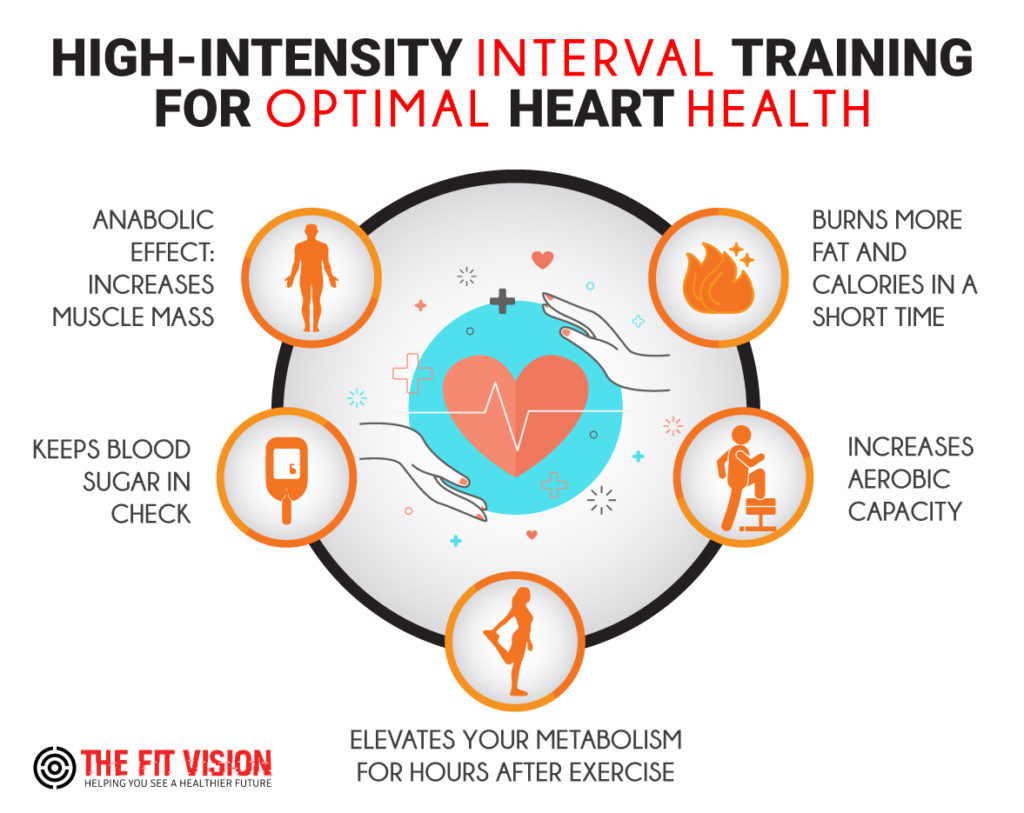The word cardio immediately makes you think of endless hours of biking or long-durations on the elliptical. Although cardio exercises are indeed tiring, incorporating them into our weekly workout sessions will provide many health benefits. However, not everyone gets around to cardio. Our busy schedules don’t always permit spending extended periods a day working out.
If you’re this busy person, don’t worry! We’ve got good news for you – there’s a type of cardio that takes much less time and is more efficient than jogging to burn calories and fat. It’s called High-intensity interval training or HIIT, and this article will give you the basics that you need to know so you can bring your body to a new fitness level.
What is High-Intensity Interval Training (HIIT)?
HIIT is relatively well known nowadays. It’s one of the best ways to achieve a fit body. We are not just talking about physical shape, but feeling good and being healthy as well. HIIT is any series of workouts that features an alternation of intense bursts of exercise and fixed periods of slow recovery periods or complete rest.
One of the incredible things about HIIT cardio is that the workout sessions are short. The whole activity usually lasts 10-15 minutes. For those people who wish to build their tolerance, they can reach up to 15-30 minutes long. Although it’s a short-period physical activity, don’t think you won’t reap fitness results from these quick workouts. Since you’re doing intense physical exercises, you will receive the same fitness and health benefits as more extended, lower-intensity exercises.
HIIT is not a fixed form of workout wherein there’s a specific routine to follow. Numerous aspects of the HIIT workout can be altered to fit your preference, such as:
- Type of activity
- Intensity, duration, and interval of working-out and rest
- Body weight or weight training
- Number of repetitions
- Number of sets in every workout session

How Does Regular Cardio Differ from HIIT Cardio?
HIIT cardio is exercise, such as running, biking or walking, performed in the trademark HIIT style – an interval of intense workouts followed by a rest or less-intense activity.
Unlike regular cardio workout sessions which raises your heart rate but keeps it in a steady state, HIIT cardio speeds up the heart rate repeatedly, then drops it back down.
Moreover, it doesn’t necessarily involve any of the usual activities associated with HIIT such as tuck jumps, jumping lunges or burpees, but only simple cardio exercises. Here’s an example of a regular HIIT cardio workout:
- Running on a treadmill for 2 minutes at 6.5-7 miles/hour
- Running for 1 minute at 3.5 miles/hour
- Repeating the interval for 3 more times, or until the workout hits 12 minutes
How Does HIIT Cardio Benefit the Heart?
Numerous studies show that regular exercise is good for cardiovascular health because it maximizes the body’s oxygen consumption. All types of exercise can benefit your cardiovascular health, but some fitness practices work more efficiently than others.
HIIT cardio is exceptionally efficient at improving your heart health for the following primary reasons:
- HIIT subjects the heart into a maximum heart rate zone, the upper limit of what the body can handle while doing physical activity, for short intervals.
- At intervals of high-intensity exercises, the rate goes down into the lower heart rate zone which serves as a time for a quick recovery.
- The high-intensity periods challenge the heart muscles to work efficiently to pump blood and to keep up with your level of training
By applying this style to multiple training sessions, the muscles of the heart will ultimately be trained to pump blood and deliver the much-needed oxygen throughout the body as efficiently as possible.
Other Benefits of HIIT
HIIT is a very effective method of exercise because it shows similar benefits when compared to doing twice as much of a moderate-intensity workout. Here’s how HIIT can improve your life:
A. Burns More Fat and Calories in a Short Time
HIIT is widely popular because it’s an exercise that can quickly burn calories. Unlike traditional exercises, HIIT may help you burn the same amount or even more calories and fat in a lesser amount of time. According to an analysis from the Journal of Strength and Conditioning Research, HIIT can burn 25-30% more calories than treadmill running, cycling and resistance training.
HIIT also helps burn fat within a shorter time than most endurance activities. This is because HIIT is an anaerobic form of workout which means muscles become more deprived of oxygen. When depleted, muscles begin to utilize the glucose in the body as fuel to perform the intense, all-out physical activities. Due to this, you can burn fat of up to 48-hours post-workout with HIIT.
B. Elevates Your Metabolism for Hours After Exercise
One of the ways HIIT cardio help you lose weight, despite the short period of workouts, actually comes after your workout finishes. HIIT can speed up your metabolic rate for hours after exercise. It also stimulates your human growth hormones (HGH) production. HGH is necessary for muscle and bone growth, fat and sugar metabolism and possibly heart function too. HGH can also aid in slowing down the aging process.
C. Increases Aerobic Capacity
As previously mentioned, HIIT improves your cardiovascular health to make sure the heart can pump an adequate amount of oxygen-rich blood throughout the body. Therefore, the oxygen uptake of cells, the amount of oxygen which the body can use, is increased with HIIT, so your overall aerobic capacity rises too.
D. Keeps Blood Sugar in Check
Decreases in blood sugar levels are made apparent by HIIT training sessions lasting at least 12 weeks. Several studies have shown that HIIT cardio does not only helps reduce blood sugar levels, but it also improves insulin resistance than traditional forms of exercise. Maintenance of a healthy blood glucose level is crucial to prevent developing chronic diseases such as type 2 diabetes.
E. Anabolic Effect: Increases Muscle Mass
Some studies have shown that interval workout sessions combined with a diet that lets you consume more calories than you burn, create an anabolic effect. You’ll notice that you’re building muscle at the same time that you’re burning calories – more muscle means more calories burned at rest. The opposite, however, occurs with regular cardio which for long periods of exercise is catabolic.

How to Get Started with HIIT Cardio
Those who wish to achieve the benefits of HIIT sometimes have a common question – where do I begin? HIIT may seem overwhelming at first, but it’s a fun and easy workout once you get used to it.
To begin, you first need to pick your preferred physical activity. You may choose from exercises such as running, biking or jumping. Then you may experiment with the duration of the exercise and recovery periods depending on your preference. Here are some examples of simple HIIT workouts for beginners:
- Biking: With a stationary bike, pedal as hard and fast as you can for 30-seconds followed by a slow pace biking for 2-4-minutes. Repeat doing this workout for 15-30 minutes.
- Walking/Jogging: Sprint as fast as you can for about 15 seconds followed by slow walking or jogging for 1-2 minutes. Repeat this workout for 10-20 minutes. Don’t forget to warm up first before doing this activity.
- Squat Jumping: Do squat jumps enthusiastically for 30-90 seconds. Then, stand to rest for 30-90 seconds. Repeat this whole pattern for 10 to 20 minutes.
Conclusion:
HIIT is a pretty convenient system of exercise especially for people who don’t have the luxury of time. You’ll get to enjoy a fun and excellent training within a short period and still achieve maximal health benefits.
As previously mentioned, you can manipulate the routine to fit your desired workout regime. Once you get used to it, you can challenge yourself to try more heavy HIIT cardio workouts. HIIT is an intense workout session that has maximal health benefits if done correctly. It will help improve your strength, agility, and endurance over time.
For help tracking you HIIT sessions please check out our workout journal right here!
References:
https://www.builtlean.com/2010/06/04/high-intensity-interval-training-hiit-best-cardio-to-burn-fat/
https://www.healthline.com/nutrition/benefits-of-hiit#section9
https://epichybridtraining.com/hiit-optimal-heart-health/
https://wellseek.co/2017/04/04/4-health-benefits-high-intensity-interval-training/
https://www.womenshealthmag.com/fitness/g19988771/high-intensity-interval-training/